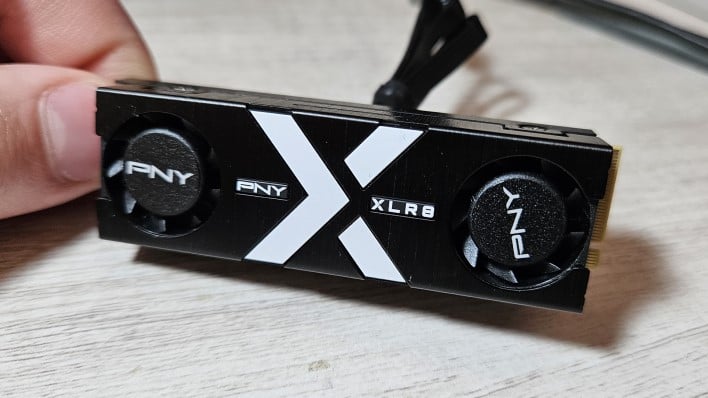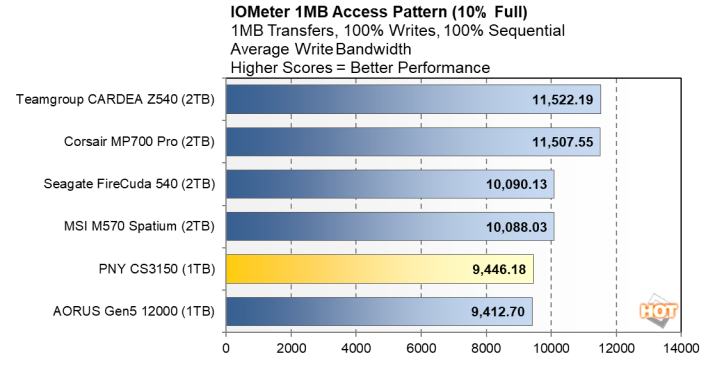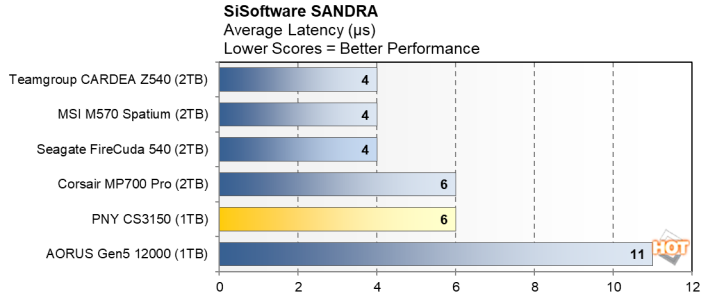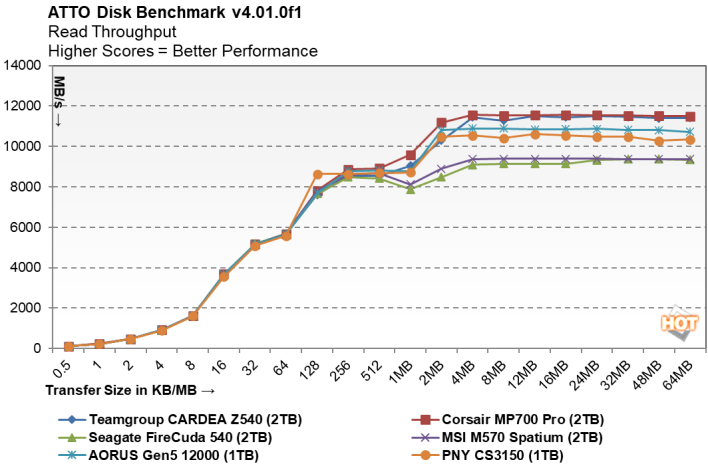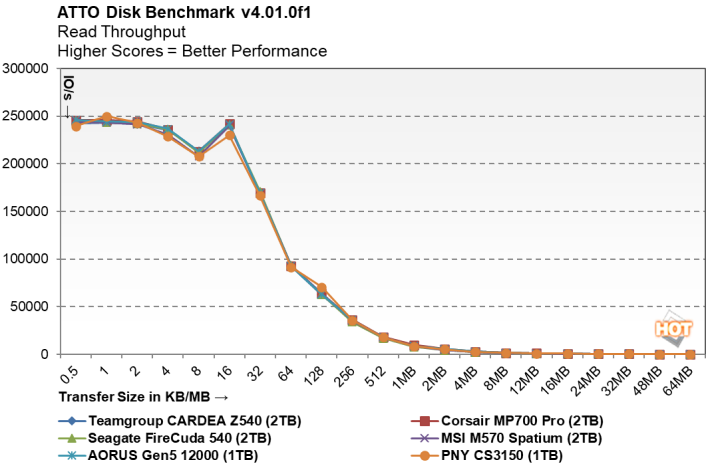PNY CS3150 SSD Review: Actively Cooled, Gen5 Storage With RGB
PNY CS3150 XLR8 1TB SSD Review: Dual Fans And RBG Make This Drive Stand Out
| PNY CS3150 XLR8 1TB: Price As Tested $185 PNY's CS3150 1TB SSD has one of the best coolers we've seen on a PCIe 5.0 SSD, though it trails in regard to write performance versus 2TB drives.
|
|||

|

|
||
Though well known for its graphics cards, PNY also offers networking, memory and storage solutions, and it's entering the PCIe 5.0 SSD space with its CS3150 series drives. PNY offers the CS3150 in 1TB and 2TB capacities, with up to 12GB/s transfer speeds, thanks to Phison's E26 controller and 232-layer Micron TLC NAND flash. Of course, there are plenty of 12GB/s drives on the market at this point, and have been for months. But what PNY offers with its CS3150 SSD is perhaps the most performant and compact active cooling solution we've seen on an enthusiast SSD yet. Plus, the XLR8 model has RGB, which may (or may not) appeal to some of you.
PNY CS3150 SSD Specifications And Features
At the time of writing, the CS3150 is available in either 1TB or 2TB capacities. While PCIe 5.0 SSDs with 4TB capacities are out there (see Crucial's T705 and Corsair's MP700 Pro), most models right now only go up to 2TB. Like other PCIe 5.0 SSDs, the 1TB and 2TB models offer very different levels of performance, with the 1TB model (which we're reviewing) offering up to 11.5GB/s in reads and 8.5GB/s in writes, while the 2TB model can do 12GB/s reads and 11GB/s writes.PNY doesn't offer endurance figures in terms of terabytes written (despite its five-year warranty), but based on other similarly configurated drives, it's most likely 700TBW for the 1TB model and 1400TBW for the 2TB model.
In respect to size, the CS3150 uses the standard 2280 form factor, but since it comes with a preinstalled cooler, its vertical size is much higher than a naked drive. However, this cooler is pretty small compared to most other SSD cooling solutions, especially larger passive heatsinks like you'd find with MSI's Spatium M570 Pro or GIGABYTE's AORUS Gen5 12000. It uses two tiny fans on top of a relatively small heatsink, but instead of using a normal PWM fan connector or a SATA connector (as seen on the MP700 Pro), PNY opted for a USB connector.
Obviously, compared to three-pin fan connectors and SATA, using USB means fan speeds can be software controlled, similar to a 4-pin fan header. The main advantage of going with USB over a four-pin cable is additional support for RGB, which would normally require another cable. The CS3150-HS(W), which doesn't have RGB, uses a four-pin PWM cable.
The underlying hardware is similar to the vast majority of other PCIe 5.0 SSD out there: a Phison PS5026-E26 controller, Micron 232-layer B58R FortisFlash TLC NAND, and 2GB of LPDDR4 DRAM (4GB on the 2TB model). This is the same hardware that first debuted with 10GB/s drives, and has been able to hit 12GB/s and even 14GB/s speeds on newer SSDs equipped with higher-clocked NAND.
The key difference between the CS3150 and other PCIe 5.0 SSDs is the controller firmware version. This drive uses version EQFM22.2, which seems to be newer than firmware found on other PCIe 5.0 SSDs, such as the MP700 Pro and the CARDEA Z540, which appear to use version EQFM22.1 (at least for now).
Overall, the CS3150 isn't really all the different when it comes to the actual underlying storage technology, but it is pretty unique for its cooler design. PNY's CS3150 XLR8 is one of the first PCIe 5.0 SSD with addressable RGB on it. There are other RGB-equipped drives out there, but the CS3150 might be the first with addressable RGB thanks to its USB connector. PNY says the fan curve on the XLR8 model can be controlled via its Velocity-X software, which can detect the temperature of the SSD unlike a PWM fan connector solution.
PNY CS3150 SSD Benchmarks
Each SSD tested here was installed into the test system as a secondary drive, with the operating system running on a different drive so that benchmark results weren't impacted by background tasks. Testing was conducted with the latest version of the motherboard's BIOS and most recent updates to benchmarks, drivers, and Windows 11. For this specific review, no SSDs required custom drivers, so all were tested with Microsoft's included Windows 11 driver. All SSDs also had th latest firmware installed.All benchmarks were run mulitple times to ensure consistent results, and between each individual test we waited 15 minutes so that the test system and SSDs would have time to rest, which meant achieving ambient room temperatures and completing any background maintenance when applicable. Automatic updates and popups were disabled so individual benchmarks were not interrupted.
HotHardware's Test System:
| Processor: Intel Core i9-13900K Motherboard: ASRock Z790 Taichi Lite Video Card: GeForce RTX 4090 Memory: 2x16GB G.Skill Flare X5 DDR5-5600 Storage: Corsair MP600 Pro NH (2TB, OS Drive) Corsair MP700 Pro (2TB) GIGABYTE AORUS Gen5 12000 (1TB) Seagate FireCuda 540 (2TB) MSI Spatium M570 (2TB) PNY CS3150 (1TB) Teamgroup CARDEA Z540 (2TB) |
OS: Windows 11 Home x64 Chipset Drivers: Intel v10.1.19468.8385 Benchmarks: IOMeter 1.1 HD Tune v5.75 ATTO v4.01.01f SiSoftware SANDRA CrystalDiskMark v8.0.4c x64 Final Fantasy XIV: Endwalker PCMark 10 Storage Bench 3DMark Storage Tests |
IOMeter Benchmarks
IOMeter is an old but still well-respected storage benchmark, which can be configured in a variety of ways to show multiple aspects of a drive's performance. For this review, we've set IOMeter to constantly perform sequential write operations at three different levels of capacity filled: 10%, 50%, and 90%. Though this kind of performance isn't strictly reflective of the real world, it can be a useful way to examine sustained writing performance over a long period of time, something that you'd expect to do with a high-end SSD. The charts below show performance over time, peak performance, and average performance across the 500-second test.With only 10% capacity filled, pretty much every drive here is running at full bore for the duration of the test. The PNY CS3150 1TB is tied with the AORUS Gen5 12000 1TB, which is expected since they are more or less identical under the hood. It's safe to say that even though the CS3150 trails some of the other drives here, it's still fast overall in regard to write performance. Though, as more capacity is filled, write speeds decline, as you'll see...
Peak bandwidth is mostly unchanged when drives are filled up halfway, but average bandwidth sharply declines for all SSDs. This is because the quickest way for SSDs to write is to put a single bit into one block at a time, even when a block can hold multiple bits like on MLC or QLC SSDs. Once empty blocks are no longer available, more bits per block will be used, which is slower. SSDs will gradually consolidate data into completely filled blocks in order to empty out as many as possible, but this process can take some time, and the rate at which empty blocks replenish is lower than the rate that they can be written.
Essentially, when less space is available, performance declines after some time, and in the CS3150's case it sees a drop to just 1,800MB/s after a minute. Despite that, the CS3150 was able to write over 500GB in that one-minute window, which is more than good enough. However, once exhausted, speeds drop to just 2,000MB/s, which is lower than the higher-end drives and in-line with the Aorus Gen 5.
At 90% filled, the CS3150's burst window closes to a mere eight seconds, dropping its peak speed of roughly 9,600MB/s to just over 1,000MB/s before recovering to around 1,800MB/s for the rest of the benchmark. That's still about 70GB written before the speed drops, but after that things do slow down considerably.
SiSoft SANDRA 2022
SiSoft SANDRA (short for System Analyzer Diagnostic and Reporting Assistant) provides read, write, and latency performance data, which is then averaged into an overall score.The PCIe 5.0 SSDs with just 1TB of storage perform much lower than the 2TB models in the write portion of this test, as evidenced by the CS3150 and the Aorus Gen5 12000 results. However, read performance is significantly ahead of the 2TB drives from the earlier 10GB/s generation, and aren't far off from their current-generation cousins with 2TB of storage.
ATTO Disk Benchmark
ATTO measures sequential read and write performance across several block sizes, from 512 bytes up to 64MB. This way, it's clear how drive performance differs depending on the block size. All settings were left at default, which meant a 256MB file size and a queue depth of four.The CS3150 trails in writes but is roughly second in reads, which is about what we'd expect. Additionally, performance differences don't manifest until the 64KB mark is met, so up until then all SSDs are essentially identical.
All of the SSDs we tested offered similar I/O performance here.

